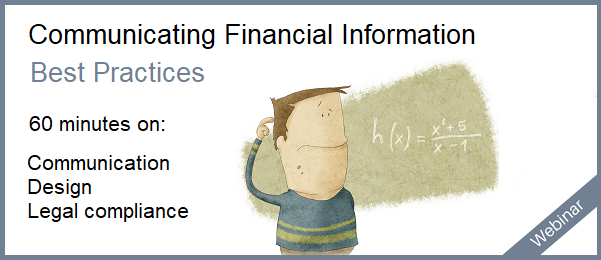Communicating is difficult at the best of times. When our topic is complex and, let's be honest, boring, the job is even harder. In this article, we will tackle one very useful technique for ensuring the readers of your financial reports and budget books understand what you are attempting to convey.
The single biggest problem in communication is the illusion that it has taken place.
George Bernard Shaw
As we have discussed in previous posts, text is one of the three essential tools at your disposal when trying to communicate non-verbally. Recall, the purpose of text is to:
- introduce a topic, a problem, a business process, or other item that the reader might not be fully conversant in,
- explain a graph or the table so the reader does not miss any nuances,
- highlight or call out a particular point in a table or graph,
- label a specific data point in a graph or columns or rows in a table,
- recommend appropriate next steps or actions.
When using text, however, not all words or the sentences they create are equal.
Readability
Readability is the degree that the prose you write can be understood. Readability is influenced by:
- word length,
- use of conventional or unique words,
- sentence length,
- number of clauses in each sentence,
- number of syllables in each sentence,
A common but bad habit for writers is to prefer longer, wordier, and more complex text. In almost all cases, this is a mistake. When trying to communicate complex information, as is often the case for finance and budget officers, focus on simplicity. Simplicity makes understanding easier and faster for your reader. After all, who has not abandoned reading an article because it was too long or too hard to follow? Some tips to consider to improve the readability of your text:
- avoid jargon and acronyms,
- omit unnecessary words,
- use shorter sentences,
- consider the reading level of your audience.
Testing Readability
If you want to improve readability, test your text. There are numerous readability-formulas & tools you can use. One popular formula is the Flesch-Kincaid Grade Level. It attempts to measure the approximate grade level required to understand the text.

There are numerous tools that will use this and other formulas on your text. From tools that only test the Flesch-Kincaid Grade Level (ReadabilityFormulas.com) to broader tools that also asses grammar more generally (Grammarly & Readable) there are many options to choose from. The results of testing your text can be surprising.
An Example
Imagine you are drafting an introduction to your budget book. Your goal is to explain to the reader some of the high-level goals of the organization. You want them to understand the principals that lead to designing the budget council adopted.
Here is the first paragraph you initially write:
The City's annual budget is created to reflect the Mayor's priorities and address community needs each year. The budget process takes place over a five-month period, during which agencies propose new or expanded programs and investments to better serve the public and meet the goals set out by the City. The Budget & Management Office staff assess proposals for their merits across a collection of considerations, with the first among them being the Mayor's Strategic Framework. This framework, shown in the graphic below, illustrates Mayor Smyth's dynamic priorities as it relates to creating a world class city where everyone has access to a home, a job, and a content future. The following pages outline key strategies and investments for priority areas and the metrics used to calibrate success.
The score of this text:
- 128 words
- Average word length is 5.2 characters
- 5 sentences
- Average sentence length is 25.6 words
- Reading time: 30 seconds
- Flesch-Kincaid Grade Level: 14 (college level)
This scoring may not immediately cause you concern. If you consider the average level of education in your community, however, you will see the problem. First, only 61.8% of Canadians and 49.8% of Americans aged 25 to 34 had either college or university qualifications. Secondly, most people prefer to read a few levels below their absolute maximum comprehension level.
A second draft of the paragraph revised to improve readability:
The City's annual budget reflects the Mayor's priorities and addresses community needs. First, agencies propose new/expanded programs. Budget & Management Office staff then assess these proposals for their merits. This process takes five months. The graphic below illustrates Mayor Smyth's priorities to create a world-class city where everyone has access to a home, a job, and a future. The following pages outline strategies for priority areas. They also provide the measures used to determine success.
The score of the revised text:
- 75 words (decreased 53 words)
- Average word length of 5.6 characters (increased slightly)
- 7 sentences (increased by 2)
- Average sentence length is 10.7 words (decreased by approximately 15)
- Reading time: 18 seconds (decreased by 12 seconds)
- Flesch-Kincaid Grade Level: 9
This second version of the text reduced reading time by 40% and made the content understandable to more of our potential audience.
Evaluate the readability of your text and make it as easily comprehensible as possible. Improving readability is one essential and easy step to improving your communication.
© 2025 FH Black Inc. All rights reserved. Content may not be reproduced, excerpted, distributed, or transmitted without prior written consent.



